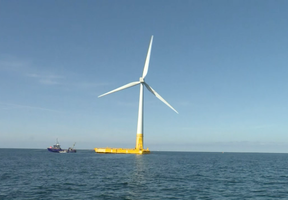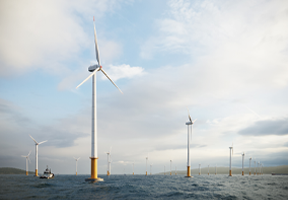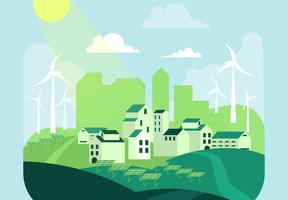A Rich and Varied Energy Potential
10 min read
Two out of three Africans have no access to modern, reliable energy sources. Their needs are therefore immense, especially as the continent's population is set to double by 2050. There are many obstacles to making the most of Africa's enormous energy potential. But other signals are green: following the success of the Paris climate summit in December 2015, the time has come to support the development of low-carbon energies. Africa could thus move straight into a new energy era without having to go through the various stages that developed countries have gone through to get there. In this respect, decentralized use of solar energy could be a real revolution.

© freepik
Oil Production Dates Back Decades
and production have been a part of African history ever since the 1930s when international oil companies arrived on the continent. Prior to 1960, African oil production was low. The first major leap forward took place in 1960-1970, led by Gabon, Nigeria, Algeria and Libya. The second one occurred at the end of the 20th century when important oil discoveries were made in the Golf of Guinea and off the coast of Angola. But since 2015, African oil's share of global production has fallen from 10% to 6.5%.
The outlook is uncertain. According to the , the transition to a clean energy economy is accelerating, with a peak in global oil demand expected around 2028 that will affect African producers. According to the IEA, Africa has the most to gain from the transition to clean energy. Africa can become a major player in the extraction and processing of critical minerals, essential for building the batteries, technologies and renewable energies of the future. According to experts, the African continent holds 30% of the world's reserves of essential minerals.
The Economic Recovery of Gas
Recovering and utilizing associated gas from oil fields to reduce flaring is one of the most significant developments in the energy industry. Flaring reduction is a global initiative. According to a World Bank report, 150 billion cubic meters of natural gas are flared annually. Of this amount 40 billion cubic meters are flared in Africa alone, which is equivalent to half of the continent's consumption1. The industry is opening up new outlets for associated gas.
Africa's LNG market, already well developed in Nigeria and Algeria, is set to grow sharply off the coast of East Africa, thanks to huge natural gas discoveries in Mozambique and Tanzania.
Hydropower Lagging Behind
Africa is home to some powerful rivers but only uses about 5% of its hydropower potential. The Aswan High Dam in Egypt, for example, built at the end of the 1960s, now ranks just 49th among the world's largest dams, which are primarily located in China and the Americas.
Several extremely ambitious projects are underway that could put Africa at the top of the global list. However, they are experiencing problems typical of those found in the hydropower industry: elevated financing costs, long completion times, challenging work in under-equipped areas and the need to obtain the approval of different countries as large-scale projects like these often involve extensive waterways.
The following two projects have either been confirmed or launched:
- The "Grand Inga" on the Congo River, DRC (Congo-Kinshasa). The Inga Falls offer considerable potential, estimated at up to 40,000 MW, almost double that of China's largest Three Gorges dam. It could supply a large part of Africa with , but this will have to be done in stages. After two installations in the 1970s and 1980s (Inga 1 and Inga 2), an Inga 3 project is advancing very slowly. The DRC has just relaunched the Grand Inga project in July 2023 with the support of South Africa, which has major energy needs and wants to reduce its dependence on .
- The Renaissance Dam, formerly known as the Millennium Dam, on the Blue Nile in Ethiopia. For years, it has been a source of tension with downstream countries (Sudan and Egypt), who fear a reduction in the Nile's water flow. Work began in 2013, and only two turbines were commissioned in 2022. New negotiations began in August 2023 to complete this project, which could become one of the largest in the world.
Solar and Wind Farms
Many African countries are starting to embrace both solar energy (the Ourazazate farm in Morocco, the Zagtouli plant in Burkina Faso and the Nzema project in Ghana) and wind power (the Lake Turkana wind project in Kenya and the Ashegoda farm in Ethiopia).
Thanks to distributed (decentralized) solar technology, the prospects for solar energy are extremely bright.





















